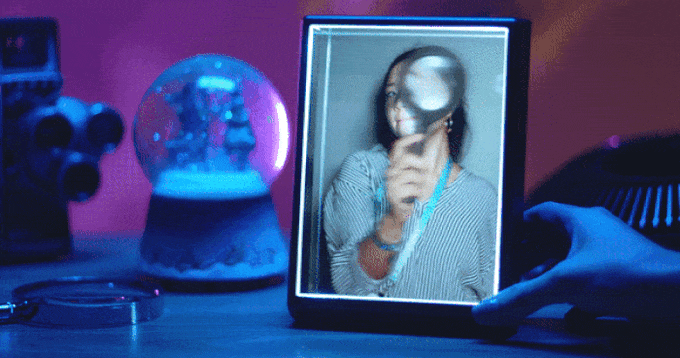The Looking Glass Portrait Expands With Your Creativity (and Skills)
The Looking Glass Portrait represents a versatile and beginner-friendly breakthrough in 3D technology, compatible with all devices.
Every Sci-Fi director and enthusiasts dream of a holographic-infused society will soon be reality, thanks to a small collective of engineers, inventors and artists from Brooklyn, New York. Dubbed the ‘Looking Glass Portrait’, this invention was designed for daily use by millions of people that work or play in 3D.
The Looking Glass Portrait Expands With Your Creativity (and Skills)
Dedicated to all who practice art, design, software developing, film, and photography, amongst others with a passion for three-dimensional capture and creation, the Looking Glass Portrait represents the world’s first personal holographic display compatible with all devices including our mobile phones.
Enabling users to record holographic messages on any device and create interactive applications with no prior programming experience, the Looking Glass Portrait is beginner friendly and expands with your imagination. Complete with a Microsoft Azure Kinect depth camera, Leap Motion Controller, a Looking Glass Light Field Photo Rail, and a carrying case for the mere price of $1,499, this technology accommodates super-realistic light field photographs, holographic video messages, high quality production depth videos, and the creation of unique 3D characters, alongside easy connections to Unity and Unreal interactive applications.
Available in two modes of operation, the Looking Glass Portrait offers a Standalone Mode when plugged into power and a Desktop Mode for crafting personal content and engaging interactive applications. Through Desktop Mode this holographic generator enables users to create, edit, and import holographic media via the HoloPlay Studio which is compatible with almost PC or Macs with HDMI and USB-C ports. This mode also allows users to explore and fine-tune their creations through running applications such as the experimental Azure Kinect, though heavy-duty applications may require a sturdier PC with a GTX 1650 or equivalent, CPU with Intel i5 or higher, and at least 8GB of RAM.
For more portable experiences, this technology works effortlessly on mobile phones, in fact iPhone’s popularized Portrait mode photographs are just one example of user content with immense depth information. Predominantly used to generate bokeh effects, the Looking Glass Portrait serves to enhance the capabilities already present in most 21st century smartphones, generating three-dimensional holograms with a single click.
Pushing advanced three-dimensional photographs with conventional panning shot techniques to a whole new level, the Looking Glass Portrait works to display immaculate clarity in all light field photographs. Creating light field photographs, also known as, moving images comprising of a series of different perspectives, with the Looking Glass Portrait, captures and displays not only depth but also the directionality of millions of rays of light, allowing objects in sight to work as they would in real time.
With a multitude of other capabilities, operations, and variations, including the creation of 3D scans with photogrammetry and LiDAR, Stereo Photos, Depth Video Production, and Peripherals for interaction, amongst a variety of others, the Looking Glass Portrait is powered by the next generation of light field technology, generating between 45 to 100 views of a three-dimensional scene and projecting those perspectives simultaneously. Unlike any display that has come before it or in the market today, multiple users can gather around a Looking Glass Portrait to see different superstereoscopic perspectives without glasses or a headset – making it the most unique, accessible, educational, and versatile tool for 3D design in existence. Available for order at an early bird deal of $999, the first batch of Advanced Beta Looking Glass Portrait systems and five Looking Glass Portrait shipments of the Hologram Collector Bundle are currently scheduled for January 2021, with more to come and further information on this technology available via the Looking Glass Factory Kickstarter.










